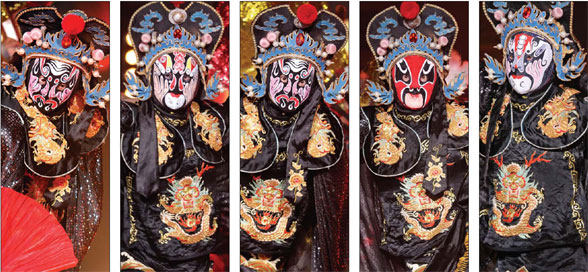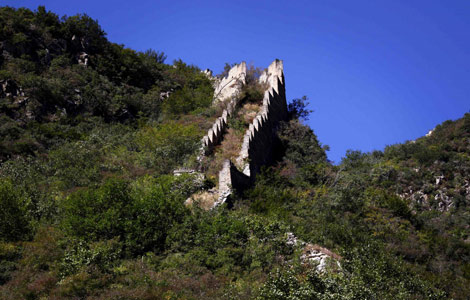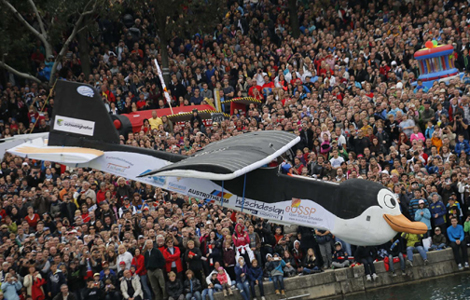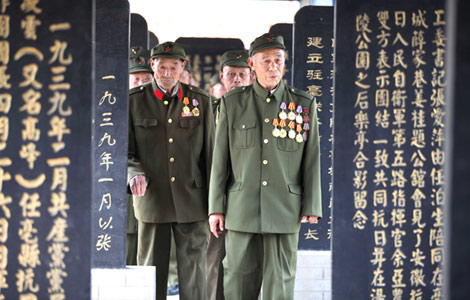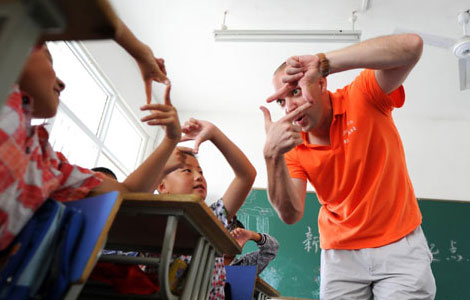Behind the Masks of the Face Changers
Updated: 2012-10-05 07:09
By Alicia Zhang (China Daily)
|
||||||||
|
Face changing is a skill used in Sichuan Opera to demonstrate sudden changes in a character's emotions. Photos provided to China Daily |
The tricks of an operatic art have long remained a secret, but that is changing.
A woman's mind is just like the weather in June or the face of a child: it changes often.
Do you agree with that?
In China, if we want to express the meaning of "capricious", usually we use the phrase "face changing" or "mask changing" (变脸 biàn liǎn).
Face changing is not only a phrase, but also a special performance art in Sichuan Opera. Performers wear brightly colored costumes and vividly colored masks, and underlined by dramatic music they wave their arms and twist their hands as their painted masks change within a fraction of a second.
It is said that face-changing first appeared in Sichuan Opera during the reign of Emperor Qianlong 1736-1795 in the Qing Dynasty (1644-1912). It reflects the character's mood - different colors of Chinese opera facial make-up represent different emotions.
But how does the performer do it?
Many people are curious about the secret of face-changing.
Generally, there are three face-changing techniques: blowing dust (吹脸 chuī liǎn), mopping (抹脸 mǒ liǎn) and pulling-down masks (扯脸 chě liǎn).
Blowing dust: The performer blows powder hidden in his palm or a small box, so that it blows into his face.
Mopping: The performer mops out the colorful greasepaint, which is hidden in a particular part of his face, especially in his sideburns or eyebrows, to change his facial appearance when necessary.
Pulling-down: The performer can pull down a mask that has previously been hidden on the top of his head, changing his face into red, green, blue or black to express happiness, hate, anger or sadness. This technique is extremely complicated, and the performer must move quickly yet smoothly for it to come off.
Even though we know the three techniques in theory, face-changing remains a complex art in practice. In the past, face-changing was a great mystery to most people; following the old coaching principle of many traditional Chinese art forms, face-changing was exclusively passed down from one generation to the next within families and only through male family members (传内不传外,传男不传女 Chuán nèi bù chuán wài, chuán nán bù chuán nǚ).
Old ways of thinking dictated that women do not stay within the family and would marry out, so the art was forbidden to them to avoid the secret being passed to another family.
When the Hong Kong pop singer Andy Lau offered 3 million yuan ($360,000) to learn this secret art from the skilled master Peng Denghui, it aroused widespread public concern.
Many based their opposition on the old coaching principle. Others argued that face-changing is one of the traditional arts protected by PRC secrecy laws, something PRC Ministry of Culture officials did not confirm.
Under public pressure, Lau was shown how to do the trick, but not how to master it.
These days, people who are really interested in face-changing have an opportunity to learn it, regardless of their nationality, gender or age. A Malaysian Chinese woman named Candy Chong has become a popular performer after having learned the art from her father.
You can find videos of face-changing shows on the Internet, performed by magicians from different countries.
Courtesy of The World of Chinese, www.theworldofchinese.com
The World of Chinese
(China Daily 10/05/2012 page19)
